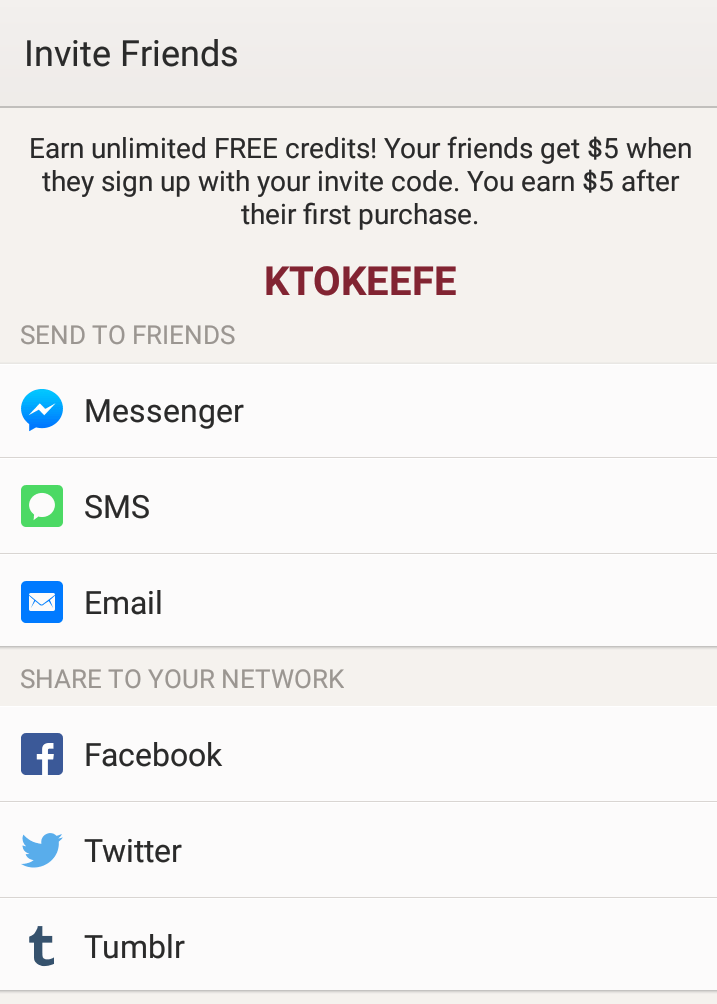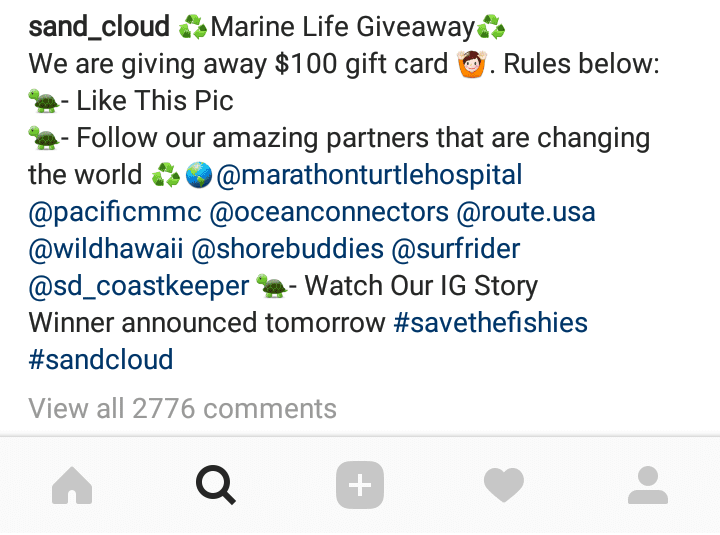Marketing is something often considered to be a costly investment to many businesses, and therefore many smaller businesses or brand new startups are often hesitant to invest in something that they may believe has questionable returns. However, small and new businesses that want to scale and grow their brand need to invest in marketing more than other, more established companies if they want to attain such goals.
Still think it’s a risky and expensive investment? Well, depending on what types of mediums you choose to advertise with, it certainly can be. The good news is that, these days, many online mediums are much less expensive than traditional print, radio, or commercial advertisements, and also offer the ability to track results in a more effective way. A few months ago, I had the pleasure of reading Growth Hacker Marketing by Ryan Holiday, and I learned that these forms of marketing can often be embedded into the product itself.
There are several examples of this in the book, but after reading, I couldn’t help but notice my own real life examples during the past few months. While Holiday has written his own sort of four-step process to follow when scaling a company, to me, growth hacking is it’s own form of viral marketing – if done correctly, it takes on a life of it’s own, while offering you the ability to easily track results.
Below, some of my favorite examples I’ve come across:
*Disclaimer: As I was writing this, I became aware that not all of the following examples would be considered growth hacking by many who are familiar with the term. However, my goal was to show companies that are excellently utilizing forms of marketing that are 1.) free, or at least free for the most part, and/or 2.) easily trackable and scalable, both of which Holiday emphasizes the importance of.
Referral Codes
A great way to get new people to sign up/subscribe to/buy your products or services is to utilize the power of your current customers loyalty. A classic example of this is offering a sign up incentive, whether discount, free sample, etc. and leveraging current customers to spread the joy by word of mouth. In the modern sense, this means sending something such as an email to a friend or giving them a social media shoutout and then offering an incentive for trying a new product. Since this is a highly testable and scalable form of word-of-mouth marketing, it is considered growth hacking.
Want an excellent example of a referral incentive? Fabletics aces the referral game. As a company that runs off of a subscription model, they thrive and survive on getting new subscribers. A good way to get new people to sign up is to offer an incentive for both the referrer and the referred.

Want $20 $40? Refer a friend to join VIP! (+ they’ll get 2 leggings for $24).
This is excellent copy as well, as it clearly states the incentive for both parties. Plus, by having this limited time offer of a $40 credit for a referral (normally only $20 per referral), Fabletics is able to remind it’s customers that the referral program exists in a friendly and exciting way.
Another excellent referral example is from Poshmark. Working in a very similar way, Poshmark users can send out an invite code to friends, family, or followers, which will give both the inviter and invitee a $5 Poshmark credit. This offers an incentive to share the code in order to receive the $5 credit. It also ups the likelihood of the invitee remembering the sign up code – since it’s free money, it’s likely they’ll remember to enter the code when signing up.

Walking Advertisements
Cars always proudly display their company logo’s on the front and back bumper. Nike and Adidas sell t shirts and shoes that also display their logo, and people swap their product up, shamelessly wearing and displaying the swoosh or triple stripes as they do so. These tactics clearly work and bring brand awareness everywhere the product travels to. Once again, these companies utilize customer loyalty. The more the customers use the product, the more they and other potential customers will be reminded of the brand name.
However, what if you sell a product that doesn’t, for whatever reason, have the ability to have the logo displayed on it? Or what if you sell a service? What if there were still ways to have buyers of these products proudly display your logo elsewhere?
There definitely are ways to do so. Bands are known for selling merchandise, such as t shirts and stickers, to their fans at concerts. But other types of businesses with much different business models are able to partake in the selling of merch. Car part manufacturers and retailers will give out logo stickers, and many colleges and universities sell t shirts at campus stores. Even businesses with service models will gladly hand out stickers or t shirts to new clients. While not all customers will partake in wearing or otherwise displaying this merch, the most loyal of them will, and they will proudly discuss the brand and company which they are wearing when a stranger approaches them about it.
An example of this that I’ve seen is from Dan’s Comp. Growing up, my younger brother was heavily into the BMX scene and would often order from this online bike accessories retailer. Every time he ordered, he would spend over a certain amount (let’s just say $100, since I can’t remember the exact threshold), and receive a free t shirt displaying the Dan’s Comp logo with his order. There were actually several different color variations of this t shirt and it’s logo, so he would be excited to receive a new variation every time he ordered. And when he would head out to the skatepark and proudly wear his new shirt, he would bring brand awareness to fellow bikers.

Social Media Shoutouts
Companies on social media often will ally with other companies within the same social media platform, and shout each other out with hopes of gaining followers from each others own base of followers. This, however, is not a highly effective way to grow a social media following, as you don’t offer the potential follower an incentive to follow other than more good content. So what would be a better way to grow one’s following without coming off as obnoxious and while offering a better incentive to new followers?
Giveaways. Ohhhh alright, I know, you probably hate getting tagged in them constantly by that one friend that is always hoping to win, but if you think about it, you can’t deny the effectiveness. That is, if you execute it correctly.

As you can see with the above example, Sand Cloud is emphasizing the importance of the entrant following the other accounts participating in the giveaway. Without the entrant following these other accounts, their entry is not valid.
You may be thinking that this isn’t effective, as the entrants will simply unfollow the other companies profiles as soon as the giveaway is over. And you may be correct, albeit only partially. Many of the entrants will not unfollow because 1.) they will simply forget that they followed the company or will otherwise be too lazy to unfollow, or 2.) they will discover that they actually enjoy the companies content and will therefore continue following to see more of that content. The latter is the subset of new followers that you want to keep engaged with, eventually hoping to gain a customer out of them.
What other great examples of growth hacking and viral marketing are out there? Let me know in the comments below!
